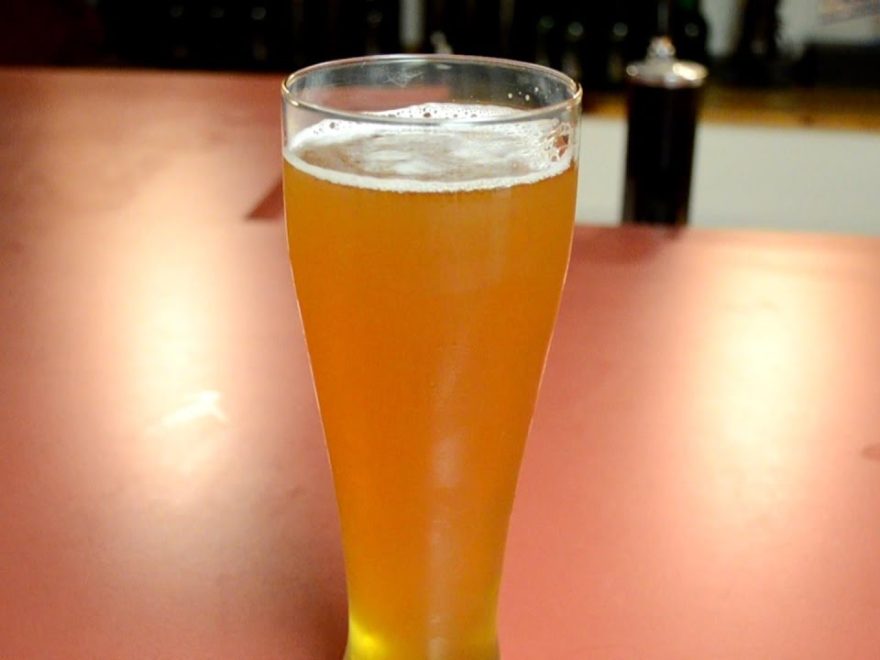My own Citra hop clone of Zombie Dust by 3 Floyds Brewing Company; an American Pale Ale by one of my favorite beers by one of my favorite brewers. I have done several iterations of this recipe over the past four years making changes each time to improve it. I think it ready to share with you.
My Zombie Dust Clone Recipe on the Latest Spreadsheet:
Zombie Dust Clone Recipe v2.2.2
My Zombie Dust Clone Recipe on Original Spreadsheet: Zombie Dust Clone Recipe Sheet
New to All Grain Brewing? Learn how by watching my Homebrewing Basics Video Series Playlist.



How do I download the recipe?
From the YouTube video description. There’s a link to download the recipe on every one of my beer recipe videos.
Curious. Do you do a diacytel rest when using that yeast?
I let all my beers go through a rest period before kegging them.
Hi Larry,
Lucas from Australia, I love your videos champ and I’m keen to try your Zombie Dust clone!:) Just wondering as I’m an extract with specialty grain brewer which grain would you recommend should you only be able too use one?
Cheers,
Lucas
Thanks! I’d use malt extract for the base malt only and partial mash the rest all together in a mesh bag similar to a “brew in a bag (BIAB)”.
2018 is my year of clones. Just switched to AG and want to dial in my system. This recipe will certainly be on my list. Keep up the good work Larry
One of my favorite beers. Thank you.
Being from Chicago and now living in California, I look forward to try and do this recipe. I brewed your hefeweizen recipe this weekend and am excited to try it out. Awesome job Larry.
Thank you.
Larry,
Thanks for this hard work. I’m looking forward to brewing your recipe. Certainly looks like you have dialed it in.
Any chance I could ask a few questions?
1.) What is your final SRM? Was your 2-ROW SRM at 3.5? Munich at 10?
2.) Also, I’m using Beersmith and with a Mash at 154, an OG at 1.065, I’m only going to reach an FG at 1.022 with the Wyeast 1968 strain. Is this what you measured? Seems I’ve read other places that Zombie finishes around 1.018.
3.) Any water adjustments?
Thanks again. I’m subscribing. Your information looks very good. Clearly a lot of hard work.
Bob
I use Briess Malts mainly, so their 2-row is ~1.8L and Munich is 10L. The spreadsheet posted doesn’t have a SRM value listed as I didn’t add a color field on my spreadsheet until a later version of my template. However, if you were to fill out my latest version with those values, it would provide an estimated SRM value.
The final gravity is designed to be higher due to the lower attenuation level of the yeast strain. This is why this strain is important to the flavor profile; to provide some residual sweetness to balance the bitterness of Citra hops. My recipe came in around 1.020 by design and actually finished (for the video version shown) at 1.018.
No water adjustments for me as I brew with the same water (Chicago – Lake Michigan) as Three Floyds. You might want to check the water profile for the City of Chicago on their website and compare it to yours to see what you might want to add.
So many people have asked the same or similar questions on this recipe that I’ve updated and uploaded it to my website at:
https://www.beernbbqbylarry.com/BNBFiles/Zombie_Dust_Recipe_on_BRTv2.2.2.xlsx
Thanks for the fast response. Looking forward to brewing.
First of all I would like to thank you for your videos on youtube. Thank you for sharing this recipe. I just ordered the malt, yest and hops at my local brewshop. We will try this recipe very soon. That beer is probably impossible to get here in Norway, so thats why we will brew our own. I have read so much about it.
It would be very interesting to know more about the prosess that lead you to the finished recipe. How and why did you choose the malt and yeast that you ended up with?
Best regards from Norway.
You’re welcome. Thanks! I explained a bit of my iterative recipes at the end of the video about the hop schedule.
I do not recall much about the grain bill other than I noticed a similarity with other people’s attempts at a clone from which I put together my own grain bill.
The yeast strain is very important. I think it was chosen due to its low attenuation profile as the residual malt sweetness that remains in the final beer really helps to offset the sharp bitterness of the high alpha Citra hops. Others have tried substituting high attenuation hops only to have a very high alcohol bitter beer instead.
Thanks for your reply. I did see the video where you explained about the yeast. That was the first thing i noticed when i put the recipe in my program, a calculated FG of 1.020. I thought that was pretty high, but I do appreciate beers with good balance and thought that this will work with the relatively high bitterness. The grain bill was very complex. I never make them that complicated, but I do not yet have the experience to understand all the malts and their impact on the finished beer. I normally just use 1-3 different malts in my recipies.